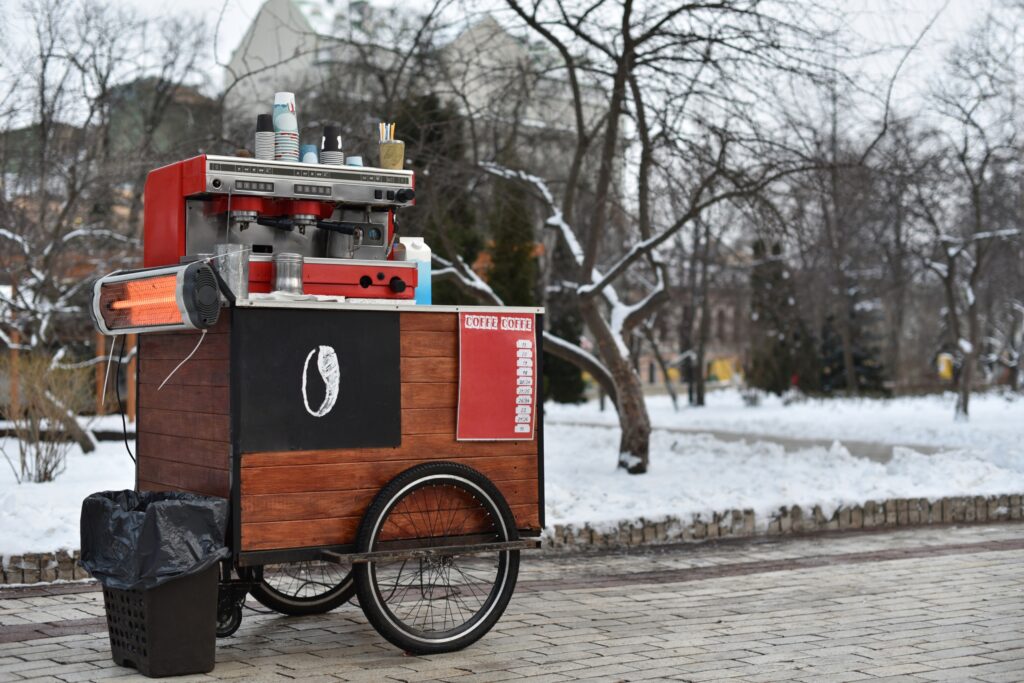
A Fresh Brew of Opportunity: Why Coffee Carts Are Surging in Popularity
The small coffee cart movement has quietly grown from a niche concept into one of the most profitable micro-startup models of the year. What makes this transformation so compelling is the combination of low operating costs, high demand for convenient caffeine, and consumer interest in independent, artisan-style beverages. Coffee culture continues to flourish worldwide, but the appeal of mobile service has introduced a new dimension: accessibility. Instead of requiring expensive storefronts, entrepreneurs now bring freshly brewed coffee directly to the flow of urban life—offices, schools, markets, transit hubs, and community spaces.
This shift reflects broader changes in how modern consumers engage with daily routines. They value speed but still expect quality and personality. A mobile cart, when managed well, meets both expectations effortlessly. Many aspiring entrepreneurs see this as a gateway to business ownership that doesn’t demand heavy capital or long-term leases. The model thrives on adaptability, allowing owners to explore different neighborhoods, events, and schedules. As a result, small coffee carts represent not only a smart business idea but a cultural response to evolving habits shaped by mobility, convenience, and craftsmanship.
The Low-Cost Advantage: How Mobility Reduces Risk and Maximizes Profit
One of the strongest reasons small coffee cart businesses are gaining traction is the dramatically reduced overhead compared to traditional cafés. A brick-and-mortar shop requires rent, utilities, interior design, signage, equipment installation, and long-term contractual obligations. In contrast, coffee carts allow entrepreneurs to start with a fraction of the investment, minimizing financial exposure while maintaining competitive product offerings. This lower barrier to entry is a crucial part of what makes this model attractive for first-time business owners or individuals exploring small-scale business innovation.
Another financial benefit lies in operational efficiency. With limited space, inventory waste is significantly reduced, and daily expenses remain predictable. Cart operators can respond quickly to customer patterns and shift locations or schedules to align with peak demand. This agility gives coffee carts an edge over fixed shops that must rely heavily on foot traffic. The model’s simplicity encourages creativity too—owners can test new drinks, adjust pricing, or introduce seasonal offerings without navigating bureaucratic obstacles or risking high sunk costs. As a result, profitability becomes easier to achieve, even in competitive urban environments.
Consumer Behavior Is Changing: Why On-the-Go Quality Matters
Modern consumers balance fast-paced lifestyles with rising expectations for quality, flavor, and personalization. They want their daily coffee to be convenient but not generic. Small coffee carts meet this need by offering fresh, handcrafted beverages that rival larger chains while eliminating the inconvenience of long queues or indoor seating limitations. Their presence in high-traffic areas—subway exits, office districts, busy intersections—makes premium coffee accessible exactly where and when people need it.
This shift in consumer priorities also reflects a broader cultural trend toward supporting local businesses and personal interactions. Customers appreciate the familiarity of seeing the same vendor daily, sharing quick conversations, and experiencing a sense of community in otherwise fast environments. Small coffee carts excel at providing this human touch. Their intimate setting creates an emotional connection that large corporations often struggle to replicate. Over time, this translates into repeat customers who return for the product as much as the relationship, strengthening long-term brand loyalty even with minimal marketing.
Strategic Location Choices: Maximizing Foot Traffic and Visibility
Location has always been a defining factor in the success of food and beverage businesses, and coffee carts benefit from unparalleled flexibility. Rather than being tied to a fixed address, cart owners can explore multiple hotspots, identify high-yield areas, and adjust their schedule based on daily demand. Office districts during morning hours, parks during weekends, and university areas during exam seasons become strategic opportunities. This mobility dramatically increases revenue potential by placing the business directly in the path of its audience.
Furthermore, coffee carts can participate in events such as farmers’ markets, festivals, corporate gatherings, and community fairs. These venues not only generate immediate sales but also help build brand visibility among diverse audiences. For many entrepreneurs, what starts as a single-cart setup grows into a multi-cart operation or even a future café, thanks to the steady exposure gained from dynamic placement. The freedom to move lets owners test new neighborhoods, understand consumer patterns, and maintain steady income even when certain locations slow down, unlike traditional cafés that depend heavily on consistent foot traffic.
Menu Simplicity and Craftsmanship: Why Less Is More
Unlike large coffee chains with extensive menus, small coffee carts often thrive because of their simplicity. By focusing on a limited but high-quality selection of drinks—espresso, lattes, cold brews, and a few specialty flavors—they reduce complexity while emphasizing craftsmanship. Customers appreciate well-made beverages more than overwhelming choices, and the streamlined process allows faster service during peak times. Quality becomes the central selling point, attracting customers who want better coffee without the delays associated with sit-down cafés.
This focus on essentials also reduces operational strain. Fewer ingredients mean fewer supply issues, fewer storage concerns, and fewer opportunities for waste. It also encourages creativity, as owners can feature local beans, unique syrups, or seasonal blends to create a signature identity. Small carts can stand out by bringing authenticity to the market—something larger chains often struggle to maintain at scale. This approach aligns perfectly with evolving consumer preferences, making simplicity a strategic advantage rather than a limitation.
The Power of Branding and Customer Experience
While small coffee carts rely on simplicity, branding and customer experience remain essential. In fact, these micro-businesses often shine because they deliver a level of personalization that larger chains cannot. A friendly greeting, remembering a customer’s usual order, or presenting a distinctive cup design adds emotional value to every purchase. This personalized experience becomes part of the ritual, enriching the customer’s day and encouraging repeat visits.
Brand identity plays an equally critical role. A memorable cart design, creative name, and consistent visual style can turn a simple coffee operation into a recognizable neighborhood favorite. Social media amplifies this—customers often share photos of aesthetically pleasing carts or unique drink concepts. When branding aligns with customer experience, word-of-mouth becomes a powerful growth engine. This is where the broader influence of global news perspectives becomes useful, as staying informed about design trends, consumer sentiment, and social behaviors helps owners refine their approach. For many coffee cart businesses, strong branding is what transforms daily transactions into long-term customer relationships.

Conclusion: Why Coffee Carts Represent the Future of Micro-Entrepreneurship
Small coffee cart businesses demonstrate how mobility, quality, and human connection can converge into a remarkably profitable and sustainable micro-startup model. Their growth reflects a global shift toward flexible, low-risk business ownership supported by changing consumer behavior and rising appreciation for local, craft-focused experiences. Entrepreneurs drawn to this model discover that affordability, adaptability, and creativity form a powerful combination, allowing them to thrive even in highly competitive environments. As urban landscapes evolve and communities embrace more convenient yet personalized services, coffee carts stand out as a symbol of modern entrepreneurship—one that prioritizes authenticity and practicality. By bridging passion with opportunity, this business model shows that meaningful success does not always require large spaces, significant capital, or complex operations. Instead, it thrives on understanding people, embracing simplicity, and meeting everyday needs with both efficiency and heart.
